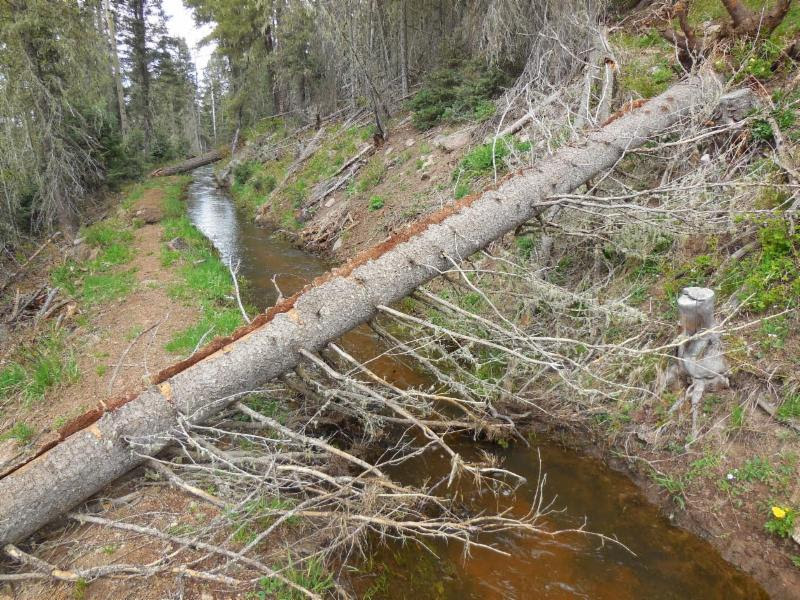
Acequia Rio de la Vaca -Photo taken by Thomas Hamm
Acequia Easement
An acequia community is only as strong as the parciantes that choose to participate. Acequia customs and traditions are very much rooted in phases. Akin to planting of corn in spring or garlic in the fall, these are based in cyclical and seasonal activities. Spring time is upon us and it won't be long until mayordomos are calling parciantes to round them up for the annual limpia. The annual Acequia limpia is just as important as the winter snow pack or the summer monsoons. This article addresses easement issues associated with annual acequia limpias and provides a brief explanation of the landowner's rights and obligations.
What is an easement?
An easement is a legal right-of-way onto another person's land. Acequias have a type of easement that is well-established and often centuries-old. An acequia easement runs along the ditch and its laterals. The "bordo" of the acequia is generally within the easement of that acequia. State law says that the width of the easement should be adequate for reasonable maintenance, use, and improvements. The easement carries with it the right to access (maintain, use, or improve) the entire length of the ditch. The acequia easement includes the right to make reasonable improvements. This includes the use of certain machinery as long as its use is for "reasonable maintenance, use or improvements." The acequia easement also includes the right to gain access to the ditch through traditional points of access, even when that includes crossing a person's property. There must be legitimate acequia business to be done each time there is entry onto someone's property.
What kind of legal document is needed for an acequia easement?
According to state law, an acequia has a legal easement as long as it has been used historically, since its establishment, for at least five continuous years. Once an easement is established, it remains intact. Acequias generally have easements that date back hundreds of years. No legal documents are required. The easement exists because of historic use regardless of whether the acequia has documented this easement.
However, some acequias have documented their easements for purposes of informing parciantes of the acequia easement. Good documentation of your easements also helps you protect this important right of your acequia. Some ways to document your easement are as follows:
- Inform your Parciantes
Include a section in your bylaws that defines your acequia easement and traditional points of access. Ensure that all parciantes on your acequia have a copy of your bylaws. The NMAA has sample language to include in acequia bylaws.
- Document your Easement
File a map of your acequia that includes your easement and points of access with the county clerk so that it is on record for title searches.
What are some examples of violations of an acequia easement?
Access to the acequia is very important. In addition to informing your parciantes about your easement, acequia officials should also carefully monitor any actions by landowners that may be violations of the acequia easement. Some of these violations include the following:
- Building fences across the acequia which block the ability to walk or use equipment along the length of the ditch.
- Building structures like houses, decks, or corrals within the easement or across the acequia.
- Blocking access to the acequia through a traditional point of access. Landowners, particularly new ones, attempt to block acequia officials or cleaning crews from crossing their property to get to the acequia.

